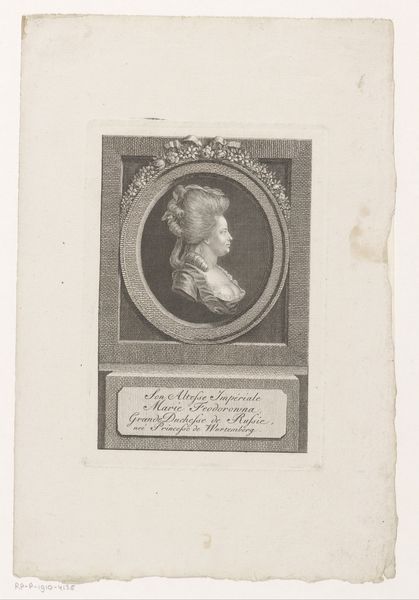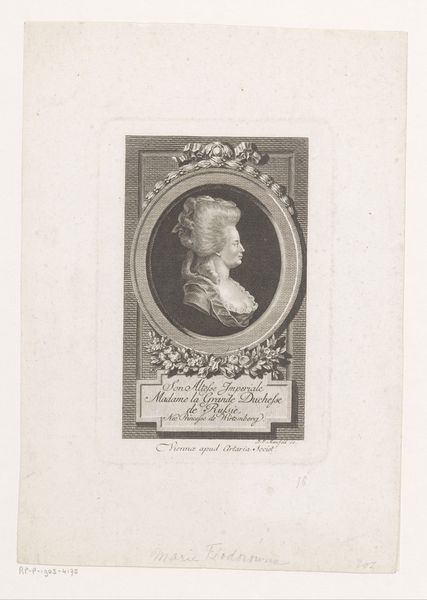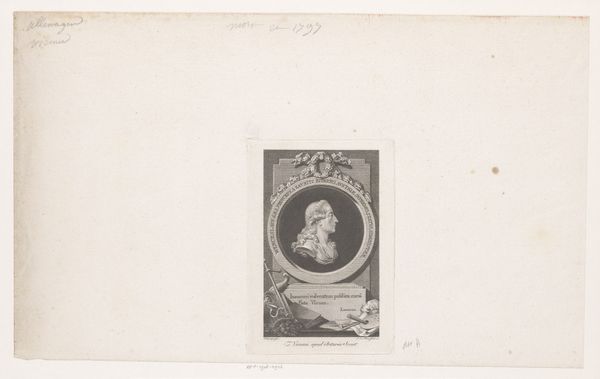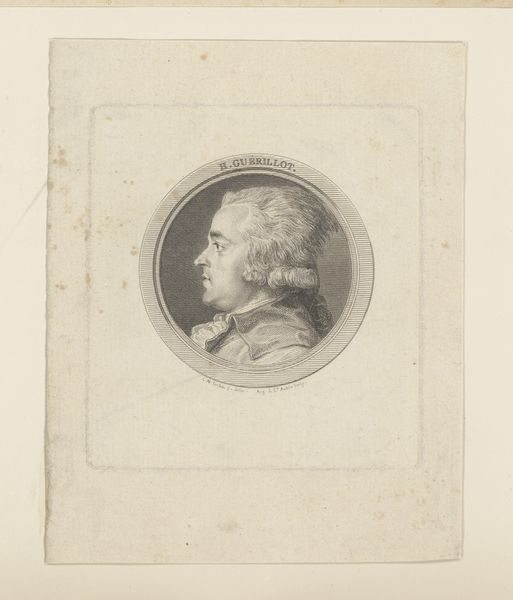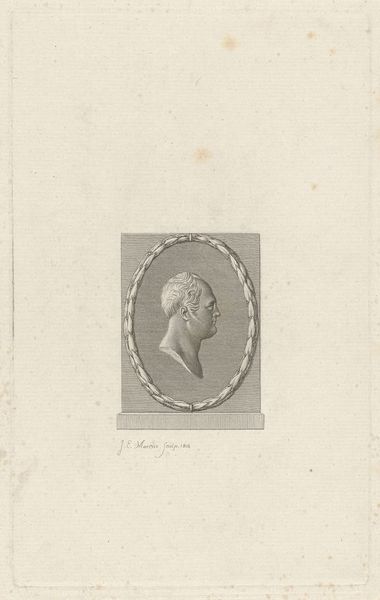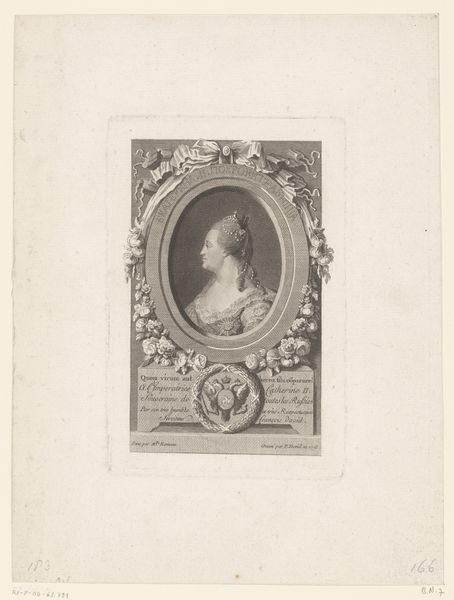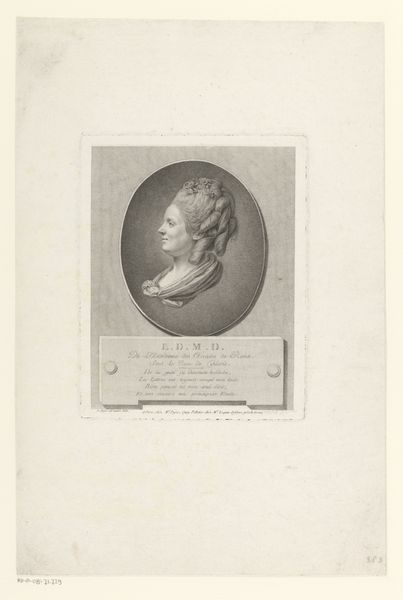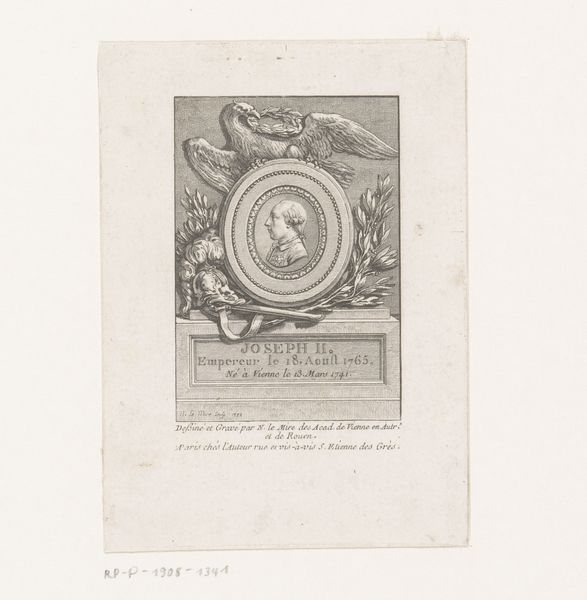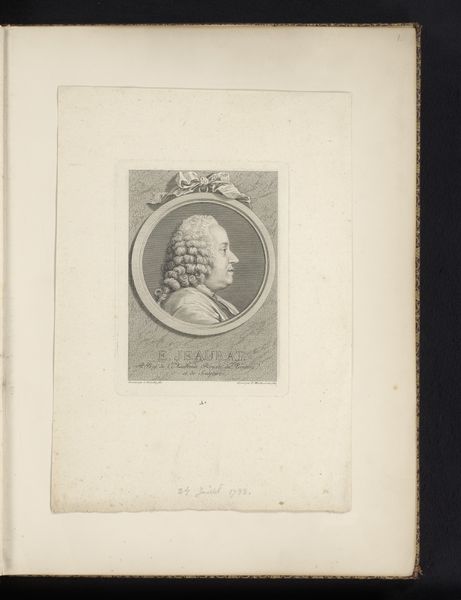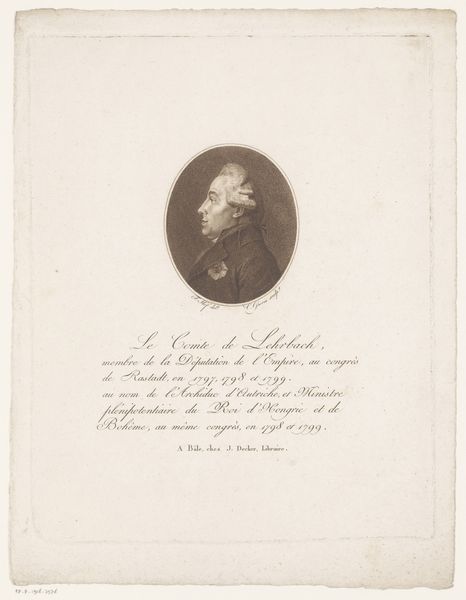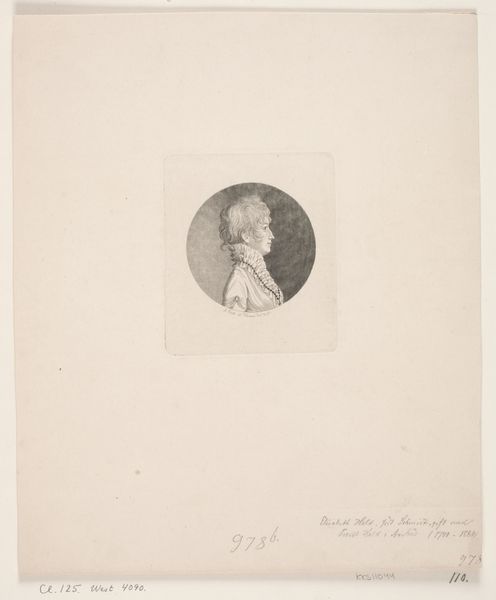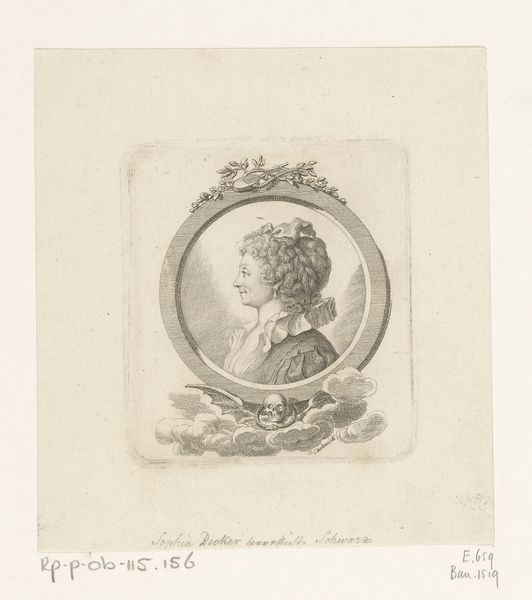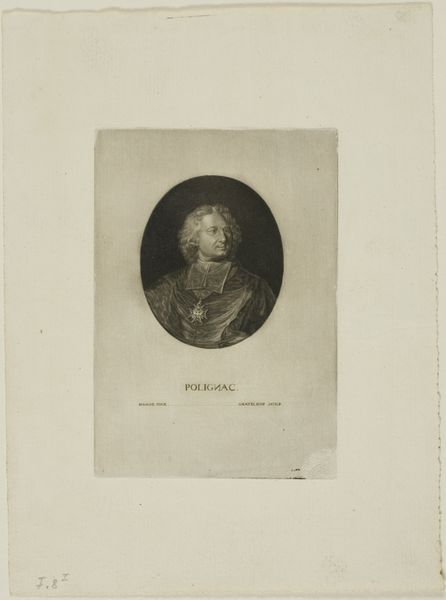
print, paper, pen, engraving
#
portrait
#
neoclacissism
# print
#
paper
#
pen
#
history-painting
#
engraving
Dimensions: height 153 mm, width 112 mm
Copyright: Rijks Museum: Open Domain
This is Augustin de Saint-Aubin’s portrait of Stanislaus II Augustus, King of Poland, created as an engraving. Engraving is an intaglio process – meaning that the image is incised into a surface, in this case a metal plate. The artist would have used a tool called a burin to cut lines into the metal, creating grooves that hold ink. Paper is then pressed firmly against the plate, transferring the ink from the grooves to the paper. Notice the fineness of the lines, particularly around the face and hair. This precision requires tremendous skill and control, with years of training. The engraver would have needed a deep understanding of metallurgy and toolmaking. Prints like this one played a vital role in circulating images and ideas during the 18th century. They made art and information accessible to a wider audience, reflecting a shift in power and knowledge. So, next time you look at a print, remember the handwork, the sophisticated techniques, and the social context embedded within the image.
Comments
No comments
Be the first to comment and join the conversation on the ultimate creative platform.
